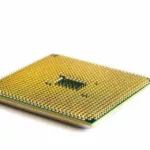Data drives the world. And yet, too many companies struggle to manage their data in an effective manner. Inconsistencies, siloing, lack of direction, too many KPIs, and an ever-fresh influx of new information can hamper otherwise well-intentioned analytics efforts.
The issue is only exacerbated as a company scales in size and becomes more complex. But there is a solution that is starting to get some attention in the analytics industry. Data observability.
Understanding Monitoring vs. Observability
Before addressing data observability as an analytics solution, it’s important to lay some groundwork. Specifically, it’s worth clarifying what the term “observability” means in the first place.
The clarification may seem simplistic and unnecessary, but the term observability is a fairly new item in the analytics sphere. Even in the development world, where the practice was cultivated before it migrated to data, the word is still a fairly new kid on the block.
This has caused many to confuse the concept of observability with the traditional activity of monitoring.
The desire to equate monitoring with observability is understandable. Both address overseeing systems (whether you’re talking about software or data). However, the former is actually part of a superset of the latter.
In other words, monitoring is a part of the activity of observability. However, observability also has additional components.
Monitoring is, in essence, protecting against a known potential issue. It guards against existing threats and, by extension, is a proactive, rigid, and prescribed activity.
On top of that, while monitoring can alert you to a problem, it doesn’t guarantee a solution — and that’s okay. When you boil it down, monitoring is (and should be) a simple activity.
For instance, you shouldn’t use monitoring too often — i.e. you shouldn’t monitor everything in a system or you’ll end up completely overwhelmed. Instead, monitoring should watch out for a select, minimal number of potential problems.
While it uses monitoring as one of its core functions, observability goes beyond monitoring for existing issues. It watches how a system behaves — in context. Instead of keeping an eye out for known threats, observability is on the lookout for the unknown.
The discipline involves:
- Gathering metrics and data and compiling them over time;
- Logging and retaining when events take place to better understand context;
- Connecting events across enterprise data systems.
These factors combine to point you toward future results, problems, and potential solutions. It collects and compares operational data that is detailed, precise, and circumstantial to predict issues so that you can avoid malfunctions. Using contextual evidence is the best way to identify and address an unforeseen problem in a system.
Observability is an activity that goes hand in hand with debugging. Whereas monitoring points to a symptom of an issue, observability helps identify unseen failure and then, ideally, leads you to a potential answer. When taken as a whole, observability involves monitoring, tracking, and triaging incidents, all in the name of helping an organization run more effectively.
Observability isn’t just for dealing with a crisis, either. It’s even useful when things are going well. It helps you consider how a system works, identifies potential problems, and finds areas for improvement or growth.
Observability: Data Edition
Thus far, observability has always been a DevOps (development and operations) term — until now. The recent explosion of information data and analytics has also brought data teams in on the observability activity, as well.
This has led to the term “data observability.” This refers to the automated activity of monitoring, altering, and triaging data and data flow.
In practical terms, data observability is a comprehensive set of tools that can be used to track and manage the health of large-scale data systems and predict, identify and troubleshoot problems when things go wrong. Data observability monitors and manages complex, inter-connected enterprise data systems that are composed of many technologies, many sources, and operating environments, such as on-prem, hybrid, or cloud.
A key difference between data observability and traditional application monitoring tools is the ability to synthesize signals across infrastructure, application, and data layers to provide a comprehensive understanding of individual components, data pipelines, and system performance.
Once again, like the DevOps version of the term, data observability uses both monitoring and other advanced analytics techniques and systems. These are utilized to ensure that the data being used is reliable, scalable, and is helping a company operate at peak efficiency.
A good data observability setup should be able to, among other things, work between the applications in your tech stack without any issues, access data without needing to extract it, and deliver information with rich context and circumstantial data.
When executed well, a data observability system should also be able to identify potential issues and changes and address them proactively. It can help you maintain end-to-end visibility, whether you’re a data engineer, a cluster administrator, or the executive overseeing the entire system.
Data observability is a discipline that is still in its infancy. However, there are already a number of companies that are blazing the data observability trail. As these growing entities continue to gain momentum, they offer ever more effective tools that can optimize one of the most critical aspects of a modern business.
Whether it’s through in-house development or a third-party data management tool, the need for data observability is becoming a necessity. As companies continue to collect data hand over fist, most are discovering that mere collection isn’t a panacea that leads to analytic success.
Organization, updating, filtering, and above all, quality control are required for data analytics to be effective in an organization. Data observability is the missing link that can help companies great and small discover how to analyze, update, and perfect their data to produce analytics that they can trust.
Written by Adam Eaton








